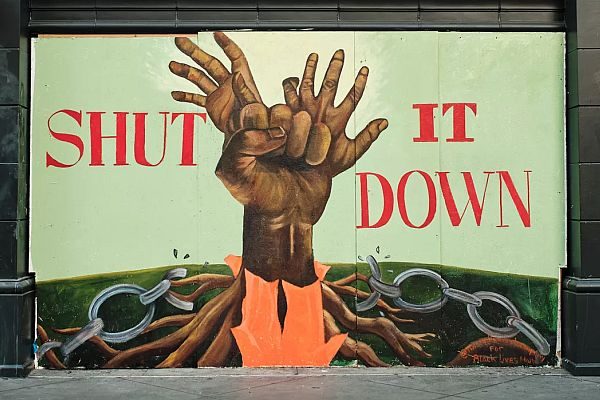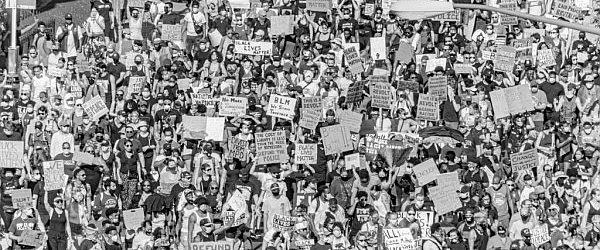Are we witnesses who confirm the truth of what happened in the face of the world-destroying capacities of pain, the distortions of torture, the sheer unrepresentability of terror, and the repression of the dominant accounts? Or are we voyeurs fascinated with and repelled by exhibitions of terror and sufferance? What does the exposure of the violated body yield? Proof of black sentience or the inhumanity of the ‘peculiar institution’? Or does the pain of the other merely provide us with the opportunity for self-reflection? At issue here is the precariousness of empathy and the uncertain line between witness and spectator.
With these lines, the inimitable Saidiya Hartman begins Scenes of Subjection, a haunting account of slavery and an interrogation of the uses to which violence and terror were put in the reproduction of this institution and its various afterlives. The story here is one of pain: of bodies in pain, contoured by pain and put on display. Through amusement and enjoyment they produce spectacles of suffering that keep afloat the libidinal economy of race.
Written over two decades ago, Hartman’s words are incantations, opening a corridor in time between the past to which she testifies and the present to which she makes her appeal. This is a present that hardly repeats or replicates but rather magnifies and telescopes the machinations of colonial cruelties. If race is predicated on transforming and revolutionising its capacity to devise and exact with impunity ever-more egregious and dynamic forms of violence, what can make it seem so immutable if not the visual regime through which pain appears recursively, as if on the same bodies, over and over again? No wonder that its apotheosis is a ‘visual empire’ conjuring in intricate, pixelated details the minutiae of terror.
‘If you aren’t moved by the George Floyd video, you have nothing in you’. In response to perhaps the largest protest movement in U.S. history, a political scientist looks to the affective power of the visual medium for explanation – the visual medium, and the spectacle of the dying, black body. The spectacle is moving. And it must be, since in its wake millions of bodies were set in motion, in the U.S. and across the globe. ‘Black Lives Matter’, a call that seems to refuse the constraints of context, is also an axiom that stands in contrast to a reality antithetical to life, and above all black life.
How are we moved to different forms of action and speech? What must you have in you to be moved by race’s horrifying spectacle? To be moved, one has to have something, that thing which comes under the sign of the ‘human’. Or, maybe, the movement verifies the signature, our body’s animation signalling its supposedly mimetic identification with the body in pain, and therefore enacting some kind of shared quality that flies in the face of racial difference. At least, this is what Hartman gestures at when she questions displays of empathy, outrage, and other sentiments of proximity and intimacy. Amusement, after all, is not the only form of enjoyment. Do expressions of rage and horror, in mimicking and giving form to pain and suffering, partake in the obliteration of difference?
Where our bodies can only do so much, written over as they are by the signifiers of race, optical tactility becomes our only recourse to that sensible thing – to sensibility itself. As Merleau-Ponty once put it, the Visible is the flesh. Feeling our way. Feeling ourselves, into the space of the other, an other which is cast out by violence and terror into the farthest realm of difference. This is how a certain myth of the ‘human’ and a shared humanity is still thinkable. Still affectable, under race. If every myth is a story about beginnings, then – as Hartman and others tell us – the story of the human can only begin where its subject also ends, again and again, at the site of absolute, irreconcilable and brutally exacted difference. It’s a story repeated at every instance where the spectacle of violence moves us to narrate.
Here in Aotearoa, where I write, the ‘exposure of the violated body’ has been both proof of the ‘inhumanity of the institution’ as well as an ‘opportunity for self-reflection’. Denunciations of police and the criminal justice have gone lock-step alongside calls to address the histories of racism and colonialism wherein these institutions have their provenance. This is also a story of beginnings, and one that should be retold, again and again, as it indeed has been with increasing frequency for more than a year prior to the murder of George Floyd. Here in Aotearoa, it is impossible to be moved by violent spectacles without recollecting the one which saw a massacre uploaded, in real time, from the headmounted camera of the armed man who entered a mosque to unleash hell on its worshippers.
Two months after this country’s streets were filled with BLM solidarity protests, I watched recordings of a reckoning. At a sentencing hearing in Christchurch, men and women stood face to face with the man who martyred their loved ones, and in their address to him gave form to ‘unspeakable things unspoken’.
As they spoke, I wondered how many of us watched and felt moved. I wondered how many of us were moved into a space we had vacated. How many of us were feeling ourselves otherwise and feeling in their words that which had until then eluded us in our own speech. I wondered how often it is that, in the libidinal economy of race, those whose humanity is extinguished come to perform the labor of reproducing the humanity of others (and what is the capacity for speech, if not the quintessential marker of the human?). If the spectacle of suffering cannot move us to our own speech and action, then it furnishes in the speech-acts of the other an occasion for a movement back to the self and the seemingly innermost recesses of being.
How do we trace the contours of that uncertain line between the witness and the spectator? Where does this line begin and end? Or does it simply run between beginnings and endings? To bear witness to spectacles of pain and suffering is to do precisely that: to strive to bear that pain and give it place in the testimony, and to create through that testimony the very voice and speech destroyed by pain. If pain has ‘world-destroying capacities’, language has, as Elaine Scarry once wrote, world-making capacities. Into language we pour that which we see, and in it we mould out of our words the ‘skeleton architecture of our lives’. Of ruined and unborn worlds.
Are they one and the same, worlds ruined and worlds unborn? Are they the same any more or less than the spectator and the witness? Elsewhere, Scarry describes beauty as the condition of justice, since in it is an injunction by which its human beholder is compelled: ‘when you see something beautiful, begin to repair the injuries of the world’. Begin to repair the world, the broken and devastated world, in return for the beautiful things to which we owe liveliness, to which we owe life. This, Scarry’s account might suggest, is the ‘life pact’ into which we enter, and by which so much of our language – from poetry to algorithms – is produced for the sake of multiplying the beautiful things of the world, ruined as it may be.
Is this where the line between spectating and bearing witness draws sharper? Are we entrusted with a different task – do we enter a different pact, when we behold the pain and suffering of the other, not just any other, but the other around which the question of the human turns? Where I’m from, to bear witness is to enter a pact not with life but with its other. Not with this world but with the other-worldly. In the shahadah, witness and martyr are one and the same, and in it we are not just moved but moved over, our testimony given as the site in which it is those others who speak. To bear witness, then, is to enter a pact with the dead, not to repair the injuries of the world by which they were forsaken, but to bring about a new one in which theirs might have been, and could still be, a life held sacrosanct.
We have to tell stories of this world’s ending, so that a different one, with a different genre of the human, can be reinvented. Isn’t this what so many movements, Black Lives Matter among them, have called for in the name of abolition?
Image: a mural in Oakland, California



